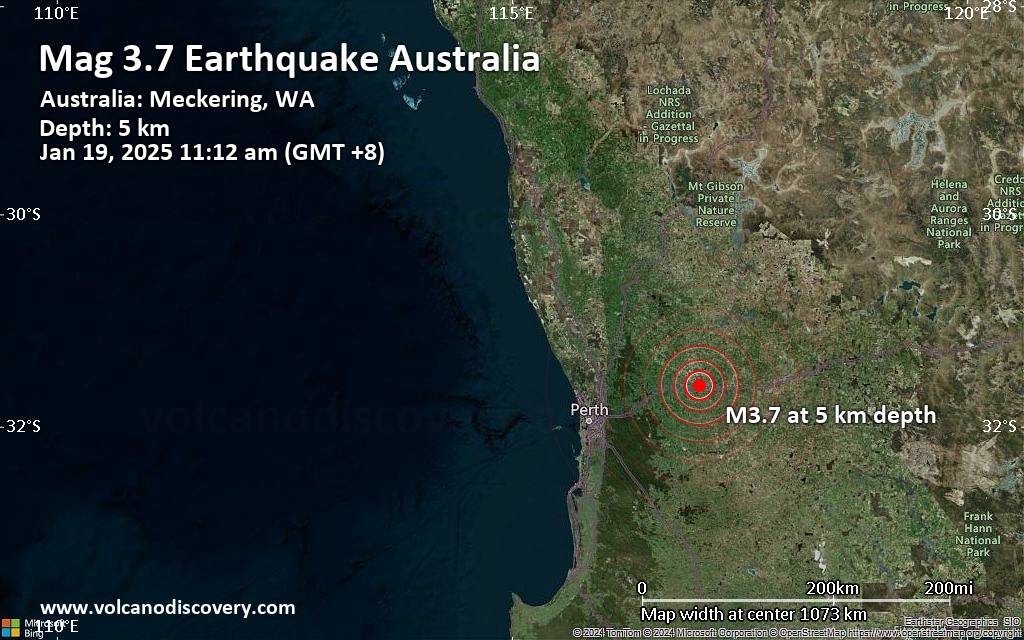**Earthquake Alert: National Weather Service Predicts Possible Earthquake Near Meridian, Western Australia**

The National Weather Service (NWS) has issued a concerning alert for residents and authorities in Western Australia regarding a potential earthquake that may strike on Thursday morning, March 27, 2025. According to the latest data, the earthquake is predicted to occur approximately 61 kilometers (38 miles) away from Meridian, located in the western region of Australia. While the precise timing of the event remains uncertain, the NWS advises individuals in the area to remain vigilant and prepared for a possible seismic disturbance.
The NWS report indicates that the region has shown signs of seismic activity in recent days, which prompted experts to issue the early warning. Earthquakes, though unpredictable in terms of timing and magnitude, are often preceded by minor tremors or shifts in the Earth’s crust. The epicenter of the potential quake is expected to be located in the vicinity of Meridian, though the exact location remains under investigation.
Given the proximity of the anticipated earthquake to populated areas, the NWS has urged local authorities to take proactive steps to ensure public safety. Emergency response teams have been put on standby, and a series of evacuation drills and preparedness exercises are being organized in areas at risk. The NWS is working in close coordination with state and local officials to provide updates as new information becomes available.
Seismic experts have also indicated that the region of Western Australia, though not typically as prone to major earthquakes as some other parts of the world, has experienced occasional seismic activity in the past. The area has historically been considered to have a moderate earthquake risk. However, even moderate earthquakes can cause significant damage, particularly in densely populated areas or where infrastructure is vulnerable.
In addition to the immediate response plans, local communities have been advised to review earthquake preparedness guidelines. This includes securing heavy furniture, ensuring that emergency kits are readily available, and identifying safe areas in homes or buildings. Schools, businesses, and government buildings are also being asked to review their emergency evacuation protocols in light of the impending threat.
Experts at the NWS have emphasized the need for individuals in affected areas to stay informed by tuning into official communication channels, including radio broadcasts, television reports, and social media updates from trusted sources. They are also encouraged to participate in community safety programs, which will offer guidance on how to respond in the event of an earthquake, such as “Drop, Cover, and Hold On” procedures during tremors.
While the exact magnitude and impact of the potential earthquake remain uncertain, the NWS is committed to providing timely and accurate information to minimize the risk to human life and property. Residents living in the affected region are urged to remain alert, stay informed, and follow the instructions of local authorities.
As the situation evolves, the National Weather Service will continue to monitor seismic activity closely and issue updates accordingly. Public safety remains the top priority, and officials are hopeful that through preparedness and vigilance, the effects of the earthquake can be minimized.



Be the first to comment